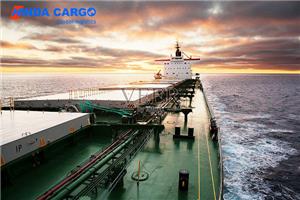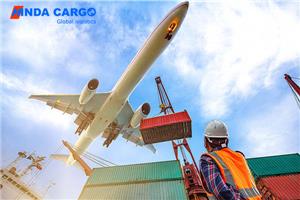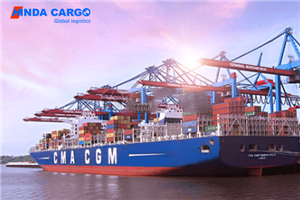Qatar's foreign economic and trade relations
1). Trade relations
1. [Total trade volume] Qatar's economy is highly dependent on oil and gas exports, and net foreign trade exports are the main "carriage" driving economic growth. Qatar's foreign trade has been in a surplus for a long time, but with the plunge in international oil and gas prices since June 2014, Qatar's foreign exchange income has fallen sharply. According to the foreign trade data released by the Qatari government, the net export rate of Qatar's foreign trade dropped sharply from about 40% in 2014 to 19% in 2015, and the driving rate of net exports to the economy has dropped significantly. According to data released by the Ministry of Development Planning and Statistics of Qatar, in 2015, the total import and export trade of Qatar was US$110.4 billion. Among them, the total export value was 77.81 billion US dollars, a year-on-year decrease of 38.1%; the import was 32.6 billion US dollars, a year-on-year decrease of 40.75%.
2. [Trade partners] According to the US CIA statistics, the top five export destinations of Qatar in 2015 are: South Korea (accounting for 18.3% of Qatar's total exports), Japan (accounting for 18.2%), India (accounting for 12.4%), China (accounting for 18.3% of Qatar's total exports) 5.1%), Singapore (4%). The top five import source countries are: the United States (13.7% of Qatar's total imports), France (10.1%), the United Kingdom (9.1%), the United Arab Emirates (7.9%), and China (7.4%).
3. [Commodity structure] The main export products of Qatar in 2015 are: liquefied natural gas, crude oil, condensate, naphtha, liquefied bismuth and polyethylene, etc.
In 2015, Qatar's main imported products were: cars, aircraft and helicopter accessories, cables and other building materials, construction machinery and accessories, communication network equipment and accessories, etc.
2). Radiation market
Qatar is a member of the World Trade Organization (WTO) and a member of the Gulf Cooperation Council (GCC), the Arab League and the Organization of the Petroleum Exporting Countries (OPEC). Currently, negotiations are underway with China, India and the European Union to sign bilateral Free Trade Agreements.
Qatar's economy started relatively late, and its market coverage is limited, mainly in South Asian countries such as the Gulf region, Arab countries and India.
3). Absorbing foreign capital
Qatar's foreign investment is mainly concentrated in the upstream development of oil and natural gas and petrochemical projects. For example, a total of 14 LNG production lines that have been built and are under construction are all joint ventures between Qatar Petroleum (QP) and European and American multinational oil companies. A notable feature of Qatar's foreign investment is that almost all of Qatar's large oil and gas companies and industrial companies are controlled by Qatar.
According to the 2016 World Investment Report released by the United Nations Conference on Trade and Development, in 2015, Qatar's foreign investment flow was 1.071 billion US dollars, an increase of 2.98% over the previous year, and the foreign direct investment flow was 4.023 billion US dollars; as of the end of 2015, Qatar absorbed The stock of foreign capital was estimated at US$33.169 billion, and the stock of foreign direct investment was US$43.287 billion.
4). Foreign aid
Qatar is rich in oil and gas resources, and its per capita GNP ranks among the top in the world.
5). China-Qatar Economic and Trade Cooperation
1. [Bilateral trade] China and Qatar have started non-governmental trade exchanges since the 1950s. The bilateral trade between China and Qatar has been developing smoothly in recent years. In 2013, the bilateral trade volume has exceeded 10 billion US dollars. However, due to factors such as falling oil and gas prices, bilateral trade between China and Qatar declined in 2015. According to the statistics of China Customs, the bilateral trade volume between China and Qatar in 2015 was US$6.888 billion, a year-on-year decrease of 35%. Among them, China’s export value to Qatar was US$2.277 billion, a year-on-year increase of 1.0%, and its import from Qatar was US$4.612 billion, a year-on-year decrease of 44.7%. %.
The main commodities China imports from Qatar are liquefied natural gas, crude oil and petrochemical products; the main commodities China exports to Qatar are machinery and equipment, electrical and electronic products, furniture, building materials and daily necessities.
2. [Two-way investment] At present, the overall scale of bilateral investment between China and Qatar is not large, but the development momentum is good. According to statistics from the Ministry of Commerce of China, in 2015, China’s direct investment in Qatar was US$141 million. By the end of 2015, China's direct investment stock in Qatar was US$450 million.
3. [Contracted labor services] According to the statistics of the Ministry of Commerce of China, in 2015, Chinese enterprises signed 14 new contracted engineering contracts in Qatar, with a newly signed contract value of 1.124 billion US dollars and a completed turnover of 1.362 billion US dollars; 1,834 laborers of various types were dispatched that year. , At the end of the year, there were 4,270 laborers in Qatar. The newly signed large-scale engineering contracting projects include China Gezhouba Group Co., Ltd.'s construction of Qatar Moga Reservoir and Pumping Station Project E-bid; China Hydropower Construction International Engineering Co., Ltd.'s construction of Doha New Port Buildings and Infrastructure Projects; China Gezhouba Group Co., Ltd. Co., Ltd. undertook the construction of Qatar Water Supply Pipeline Network Expansion (Phase VI) Project-B tender section, etc. At present, the main Chinese enterprises in Qatar are: Power China, China Harbour Corporation, Huawei Technologies, China State Construction Engineering Corporation, China National Offshore Oil Corporation, Gezhouba Group, Industrial and Commercial Bank of China, ZTE, China Railway Construction 18 Bureau and Beijing Urban Construction Company, etc.
4. [Currency Swap Agreement] During Qatar's Emir's visit to China in November 2014, the People's Bank of China and Qatar Central Bank signed a bilateral local currency swap agreement of RMB 35 billion. The agreement is valid for three years and can be extended upon mutual agreement. The Doha RMB Clearing Center was officially launched. At the same time, Qatar was granted a Qualified Foreign Institutional Investor (RQFII) quota of RMB 30 billion. This is the first time China has opened its domestic capital market to a Middle Eastern country.
5. [Capacity Cooperation] China and Qatar have not yet signed a production capacity cooperation agreement and an infrastructure cooperation agreement.
6. [Mechanism of Economic and Trade Joint Committee] China and Qatar established an inter-governmental economic and trade joint committee mechanism in 1993. At present, China is negotiating a free trade agreement with the Gulf Cooperation Council (GCC) including Qatar, and China and the GCC have expressed their commitment to reaching a comprehensive free trade agreement within 2016.




